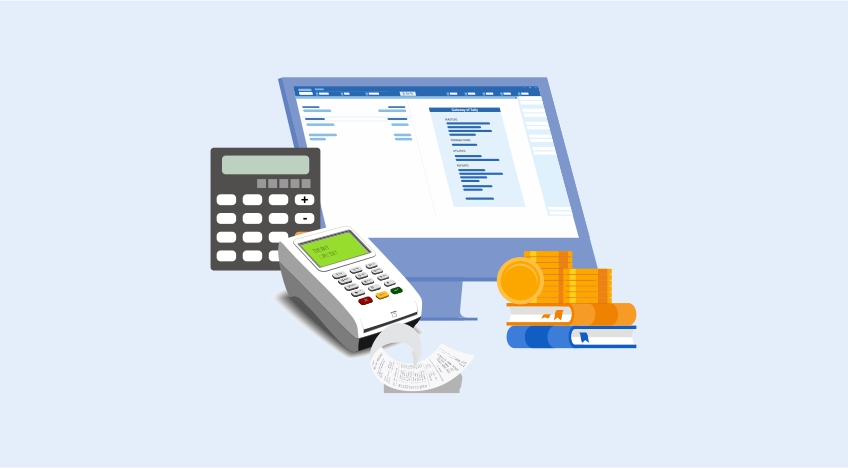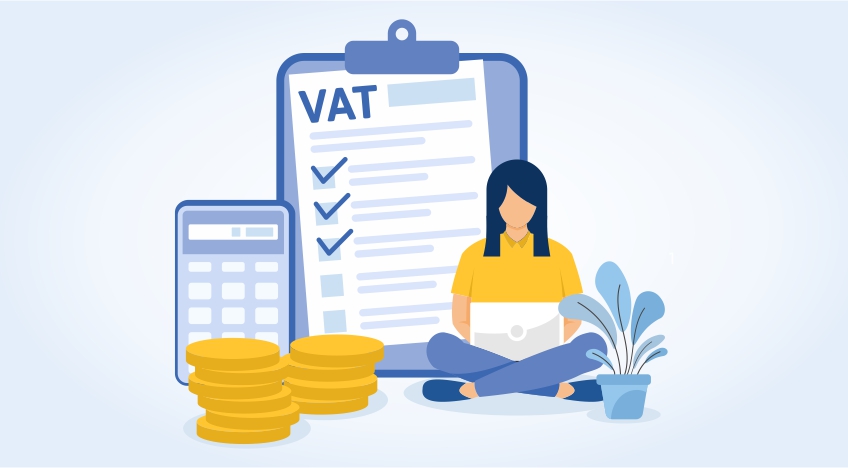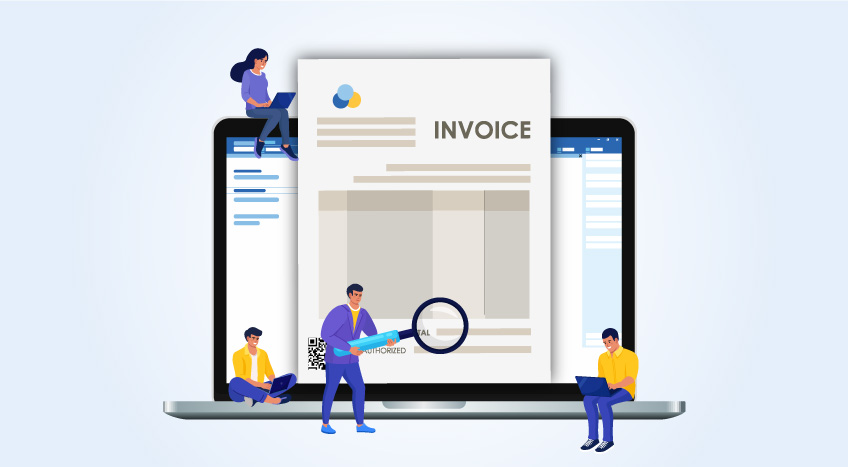- What is Value Added Tax (VAT)?
- Who should register for VAT?
- How does VAT work in Kenya?
- What are the three types of VAT?
- What is the VAT rate in Kenya 2022?
- Who can pay VAT in Kenya?
- Electronic tax invoice
- Requirements for electronic tax invoice
- VAT on imported services
- Who should pay VAT on imported services?
- How do I pay for VAT on imported services?
- When is VAT on imported services due?
- What is withholding VAT?
- How do I pay for withholding VAT?
As a business owner, it is essential to diligently keep track of all your financial transactions. The two primary reasons for business accounting are tracking financial information and calculating and paying all the taxes and dues that are owed to the government. To pay your taxes on time, you must understand the tax rules, keep impeccable business records, and calculate the tax amount based on the business records. Kenya follows a Value Added Tax system in line with the system followed by many countries globally. Read on to understand better the Kenya VAT tax and how your business can stay compliant with VAT.
What is Value Added Tax (VAT)?
Value Added Tax or VAT is a tax levied on goods and services provided or imported into Kenya. VAT is calculated at each supply chain stage where value is added to the goods or services. There are many such points in the life cycle of goods, from initial production to the final point of sale. You can calculate VAT as the cost of the product minus any costs of materials in it that have already been taxed. This value-added system is followed in many industrialized countries globally. One of the main criticisms of the VAT is that it takes more effort to calculate. Its supporters argue that it is simpler and standardized. When you understand how it works and uses the right tools, VAT is indeed simple to calculate and file.
Who should register for VAT?
You must register for VAT if you are a person, individual, company, or partnership who plans to supply or has supplied taxable goods or services worth Kshs 5,000,000 or more within 12 months. You can register online and after registration. No VAT number is issued, and the person is identifiable through their Personal Identification Number (PIN). You can pay VAT by submitting monthly returns online and making payment of the due VAT .
How does VAT work in Kenya?
VAT works as the difference between the input and output tax. The tax charged when you buy taxable items for business purposes is called the input tax, and the tax levied on the sale of taxable items is output tax.
VAT payable = Output tax - Input tax
Let us take for example, a purchase at the price of 10,000 that is taxed at 14% VAT which amounts to 1,400 as the input tax. The total amount paid is 11,400. The businessperson then sells this same item at a profit of 10% for 11,000, and the tax levied at 14% is 1,540. So the total; sale price is 12540.
VAT payable = Output tax - Input tax = 1540-1400= 140
This is also 14% of the value addition of 1000. So the businessperson has essentially been taxed only for the value that has been added to the product that has been sold.
How do I file for VAT?
You should file VAT returns for every month through the iTax platform on or before the 20th of the following month. Even if there is no VAT to declare, you must file a NIL return.
How do I pay for VAT?
When you file your VAT online through the iTax platform, you can generate an E-slip. You then use this slip to pay the tax at the KRA-appointed banks. It is possible to also pay by authorizing your bank to do so through a direct credit transfer to the Commissioner’s account at the Central Bank of Kenya.
What is the penalty for late filing and paying?
The due date for a month’s VAT filing is on or before the 20th of the following month. If you file late, the penalty is between, Kshs. 10,000 and 5% of the tax due, depending on which is higher. You will additionally be charged late payment interest at the rate of 1% per month on the unpaid tax and until the tax is paid in full.
What are the three types of VAT?
Standard-rated: A general rate of 14% applies to all taxable goods and services except those that are classified as zero-rated. Petroleum and petroleum products are charged at 8%
Zero-rated: The zero rate applies to designated products and industries to promote them. The list of items that are exempted from tax is published by the authorities. If you trade exclusively in these zero-rated products, registration for VAT is not required.
Exempt supplies: The list of exempt items is published by the government
What is the VAT rate in Kenya 2022?
The general VAT rate in Kenya in 2022 is 14% and is subject to change if there is any change in government policies.
Who can pay VAT in Kenya?
Any person, individual, company, or partnership who has planned to or has supplied taxable goods or services of the value of Kshs 5,000,000 and above within 12 months must pay VAT.
Electronic tax invoice
The electronic tax invoice was introduced by the VAT (Electronic Tax Invoice) Regulations, 2020, which was gazetted on 25th September 2020 by Legal Notice No 189). It is an invoice that is generated by a compliant Electronic Tax Register (ETR). This ETR performs a validation process to validate the correctness of sale invoice data generated with a unique QR code for each invoice. It is easy to verify the validity of an invoice simply by scanning the invoice. The generated invoice is given to the customer. The electronic version of the invoice is transmitted to the KRA (Kenya Revenue Authority) in real-time or as close to real-time as possible.
Requirements for electronic tax invoice
All VAT transfers should use a compliant ETR from approved ETR suppliers to generate an electronic invoice. The KRA has published the guidelines on compliance. The compliance transition period is from the 1st of August 2021 to the 31st of July 2022 by which time all VAT traders are expected to be fully compliant with the electronic tax invoice.
VAT on imported services
The VAT that is levied on imported services is also called reverse VAT. These services could be provided by a person who is non-resident and, therefore, not required to be registered for VAT in Kenya. Export Processing Zones (EPZ's) that provide services in Kenya are also chargeable under imported services.
Who should pay VAT on imported services?
Any importer of a service that is classified as an imported service is liable to pay VAT (reverse VAT) regardless of the importer’s VAT registration status on the imported service.
How do I pay for VAT on imported services?
To pay VAT for imported services, the importer must register for a KRA PIN. This PIN is then used to generate an e-slip (electronic payment slip) on the iTax platform. The importer then pays the tax using the e-slip.
When is VAT on imported services due?
The VAT on imported services is due when the following happens:
- Receipt of the taxable service
- Receipt of an invoice for the taxable service
- Payment towards all or part of the service, whichever is the earliest
If you pay a tax on an imported service that you use for your business, you can calculate it as the input tax when paying the subsequent VAT.
What is withholding VAT?
Withholding VAT is a system by which the government ensures accuracy and proper payment of all the VAT that is due to the government. It is a measure that will prevent the suppression of facts to avoid tax payments. In the withholding system, the government designates withholding tax agents. Let us take an example of a customer of a taxpayer who is a withholding VAT agent. The payment is made to a withholding VAT agent without the VAT when a sale is made. So, the agent withholds the VAT and issues a certificate to the supplier for the amount. The supplier can then claim this VAT charged at 2% of the supplied invoice value. Withheld VAT does not apply to zero-rated supplies and exempted goods and services.
How do I pay for withholding VAT?
The withholding VAT agents pay the withheld amounts to the Commissioner on the 20th day of the month following the deduction online via iTax. The supplier whose VAT has been withheld still has to submit a return that accounts for the VAT balance.
Read More:
Explore More Products










